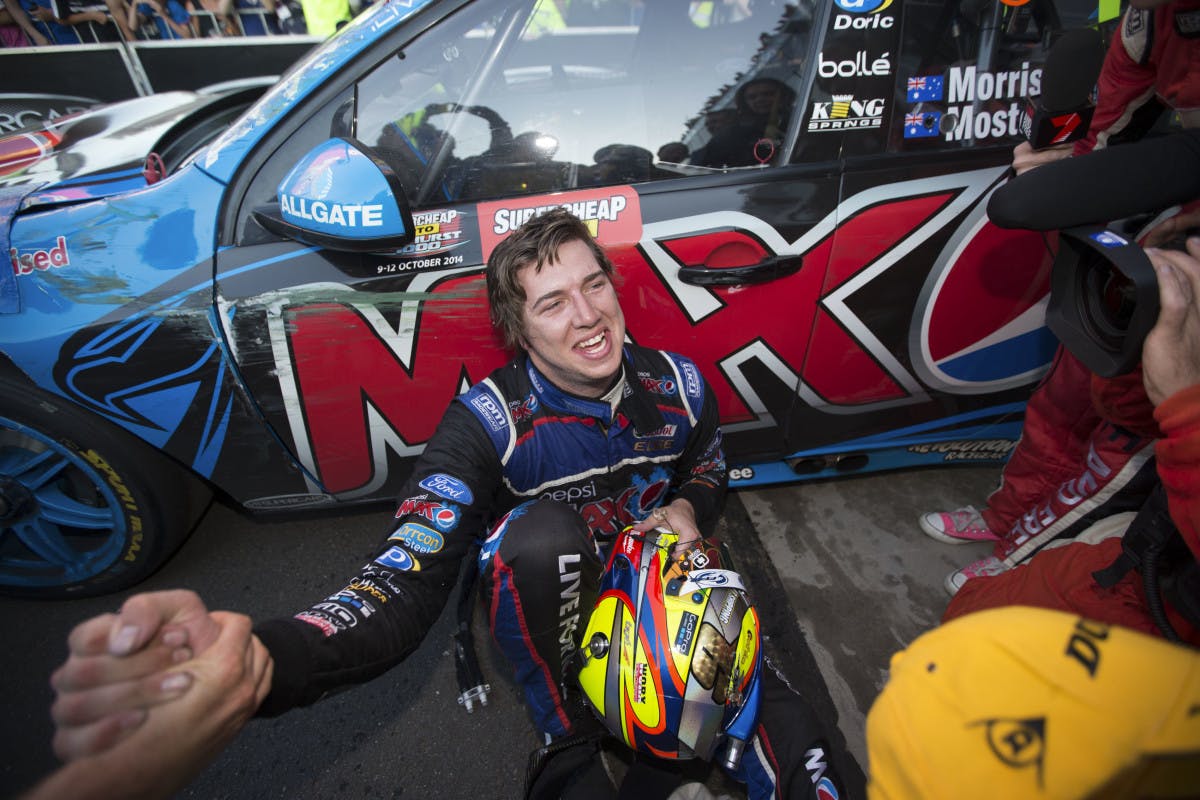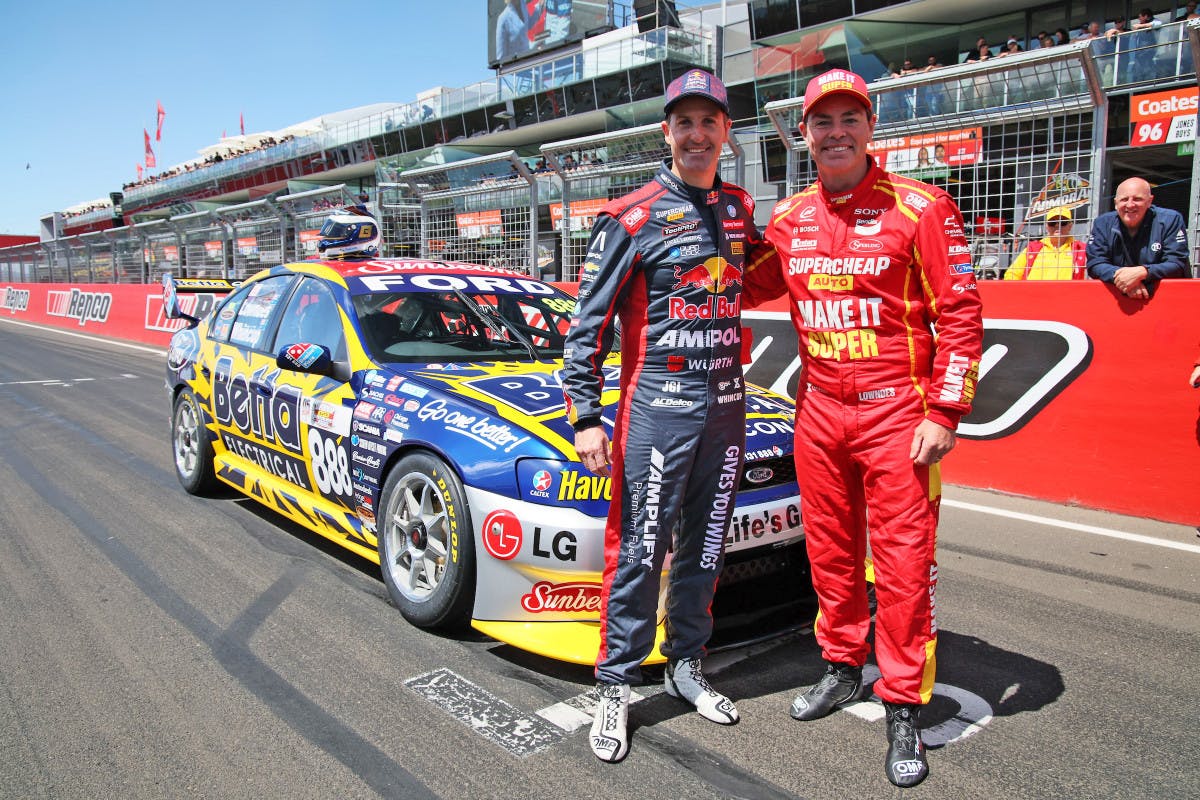Saturday Sleuthing: Jeff Grech
The most dominant team performance in modern Supercars Championship history happened under Jeff Grech’s watch.
A motorsport devotee from his days racing dirt bikes in his youth, Grech (pronounced ‘greck’) worked for some of Australian touring car racing’s greatest squads – the Holden Dealer Team, Perkins Engineering, Gibson Motorsport – before accepting a job to join the Holden Racing Team.
Within a few years, HRT grew from a squad that, in the year prior to Grech’s arrival, wasn’t even racing a full season into the championship’s benchmark for professionalism and success.
At the same time, it launched the youth driver revolution of the late 1990s by giving the likes of Craig Lowndes, Greg Murphy and Jason Bargwanna their Supercars debuts.
After several years away from the sport, Grech returned to run Charlie Schwerkolt’s Team 18 in 2016, a post he departed at the end of last year.
Saturday Sleuthing caught up with him in his latest motorsport role – as the new General Manager of Winton Motor Raceway.
What does an average day look like for Jeff Grech in 2019?
Well, it’s busy here at Winton, that’s for sure! Running with the crew that we’ve got up here from daily rental to major events organisation, it’s a fairly busy environment.
How are you finding the transition from running cars on a circuit to running the circuit itself?
It is a complete ‘tree-change’ – that’s what I like to call it.
We’ve got staff that look after the external parts of the circuit, but certainly running events and even day-to-day track hire with arranging medical, arranging various categories, it’s quite a different environment but one I’m thoroughly enjoying.
Grech, second from right, with the HDT crew in 1984
When did the motorsport bug first bite?
My father used to race motorbikes and I raced motorbikes in my early teens.
I actually won a round of the Victorian Championships and was going along OK, but I realised I’d never be a motocross champion so I got out before I hurt myself.
There was a teacher at Batman Automotive College, Colin Russell – he’d worked with Allan Moffat and various other teams.
At the time, while he was teaching, he was also on a part-time basis looking after Larry Ormsby’s Top Fuel dragster.
They were down a man and Colin said, ‘do you want to come away and give us a hand?’
From there, as people moved on, I got more of a senior role to the point of going to America with Larry for a bit of a working holiday.
That’s when I knew I wanted to pursue a full-time career in motorsport. Not just volunteer but actually work in it.
Grech working with Perkins Engineering at Bathurst in 1990
You worked for some of the biggest names and teams in the sport: Peter Brock, Larry Perkins, HDT, Fred Gibson. What were the key things you learnt from those people and those times that you put into practice at HRT?
Working for the HDT, and under Larry directly, you learnt the engineering side of racing.
Larry’s idea was that anything that was developed or went on a racecar, first and foremost, had to survive Bathurst. He wouldn’t put anything on that was vulnerable – things that might have been alright at a sprint round.
Then you had Peter who was the consummate professional; we were the factory Holden team, and it commanded a lot of kudos in the industry.
You certainly saw the professionalism, and you had to step up as a part of the team in appearance and results for that to remain.
When the Nissan GT-R first hit the track, it was a sight to behold – you just wanted to work on the thing.
When Fred and Mark [Skaife] offered me a job to come over, you’d be silly not to take it up because it was an awesome thing to work on, especially in those early stages of development.
Fred’s was a factory team, and he ran it as an elite operation in its marketing and presentation. Everything always had to be 10 out of 10.
The way we dressed to travel, the preparation on the car, the workshop in appearance, the marketing. As a young person that rubs off on you. That stayed with me.
The Gibson Nissan program netted back-to-back Bathurst victories in 1991 and '92
How did the opportunity to join HRT come about? Do you remember the phone call or the conversation that started it?
I remember bumping into John Crennan at Lakeside (in 1993) while I was working for Gibson Motorsport.
John approached me and said, ‘look, would you be interested in coming on, not straight-up as the team manager but as workshop manager’ and I said I would be interested.
There was a bit of dialogue with John, and eventually [then-team manager] Neal Lowe rang me at the request of John, and I started there as workshop manager.
Then before I knew it, Neal resigned and I then took over with Tomas Mezera.
We made Tomas originally team manager because there was a lot of engineering stuff to sort out with personnel, and I worked in the background.
We got Ron Harrop involved and then, once we got everything up to a bit of a standard, I took over from Tomas as team manager.
Under your watch, HRT introduced a wave of young talent to Supercars; Lowndes, Murphy, et cetera. Was that something you drove?
Yes, very much so.
We had a young team. For a team manager to only be age 34, that was a big thing in the sport back then.
We were the first to recruit proper automotive mechanical engineers in Chris Dyer and Richard Hollway, and put some engineering disciplines in place together with Ron Harrop. We did a lot of ‘firsts’ there.
But with drivers, it was always the intention to get young drivers to be a point of difference.
It was the ideal time to introduce blokes like Craig Lowndes and Greg Murphy because the tuition from Peter Brock, you could never buy it. It was just invaluable.
We’d suddenly brought back the old ‘HDT’ feel where we’d become the people’s team again.
John’s marketing prowess instigated a lot of pollination between the road car business and the racing side, and on top of all that was Peter Brock. And we just went from strength to strength.
Skaife winning at Eastern Creek in 2001, the year of his second HRT title
HRT essentially ruled the sport from 1996 to 2002 in a way that we are only seeing again now with DJR Team Penske. What were the key things that made the team so dominant? That era had a lot of smart operators in garages up and down pitlane...
It’s the old saying: you can put anyone on Phar Lap and he won’t win, but if you’ve got the best jockey on a donkey, he’s not going to win either. It’s got to be the best of the best.
First and foremost, you need the best personnel you can get. That’s key to the whole thing. Second is the engineering and the equipment. And third – this is more in importance than rating – is the driver.
It all came down to the people. The guys and girls that we had in that period were just the best. It was a pleasure to work there. And it wasn’t down to one person.
It’s no different to where Scotty McLaughlin is today. He’s a ripper young driver and he’s doing a ripper job, but he’s got a ripper team and ripper equipment.
You look at the domination, that’s where it’s from. You can’t have it unless you’ve got those three things cemented in place.
In your opinion, why did HRT struggle to recapture that level of performance after the collapse of TWR in 2003?
It was a tumultuous period. With the collapse and Holden buying the assets off the receivers, people got involved and tried to rejig the business. I knew from the outset that it wasn’t going to work.
Initially I was still involved and we had to reshuffle the divisions around where they created Holden Motorsport.
But with all that, they broke up the band. They broke it up before it had finished being so successful.
It was never going to be repaired easily. When I left – and it wasn’t any of my business – it wasn’t put back together properly.
Unfortunately when you break something and you don’t fix it properly, it’ll always stay broken.
Skaife and Lowndes share the front row at Eastern Creek in 1999
So much of your career in the Supercars era of the sport is linked with Mark Skaife, from the Gibson era, through HRT, then his co-driving at Tasman. We know what he went on to achieve at HRT, but how did he shape up against Lowndes when he first arrived?
Mark is a consummate professional, and in the car he was just a fierce competitor.
We all enjoyed – well, I certainly enjoyed – being around Mark when he was driving and involved in the team, because he knew as well as I did that unless you’ve got the right people in the team, it was never going to work.
It was hard for Mark in the early years when he came over in ’97 to HRT, first as Brock’s co-driver then full-time in ’98.
At the same time, Craig came back from Europe and came into the team. They were very different people. Craig had already been with us, so he basically waltzed in and took up where he left off.
For Mark, he had come out of an environment at Gibson Motorsport, and we did things a lot differently. It took him time to get comfortable – but it wasn’t long.
After winning the 1996 ATCC title as a rookie, Lowndes won Sandown and Bathurst with Murphy
Looking back, what was your most satisfying achievement in your time in Supercars?
There’s been many times that I’ve cherished. But given the first three years at HRT we went through a bit of hell – and I personally made a lot of mistakes – the season of 1996 is probably the one I cherish the most.
I’ve got to say, equally as close were the ’98 and ’99 seasons with Mark and Craig, but ‘96 is the one that I reflect on and always will.
For the team to go through two, three years of hell before to get to the point where we were where we wanted to be, and then taking the gamble of putting Craig in the car – we got a lot of criticism when we made that decision.
And Peter did a remarkable job that year also, I must say. He had plenty of results and, when it looked like Craig was going to win the championship, Peter was an enormous support to him on how to handle himself.
I’ve got to say, to this day, that year is credited to John Crennan.
He backed us all the way, and not too many people would’ve stuck their neck out and done that, but he could see the vision, and he wanted it.
He allowed it under a lot of duress from General Motors, from other drivers, from other people in the sport that said it wouldn’t work. He backed us all the way.
Everyone got their just desserts for sticking with the concept.








